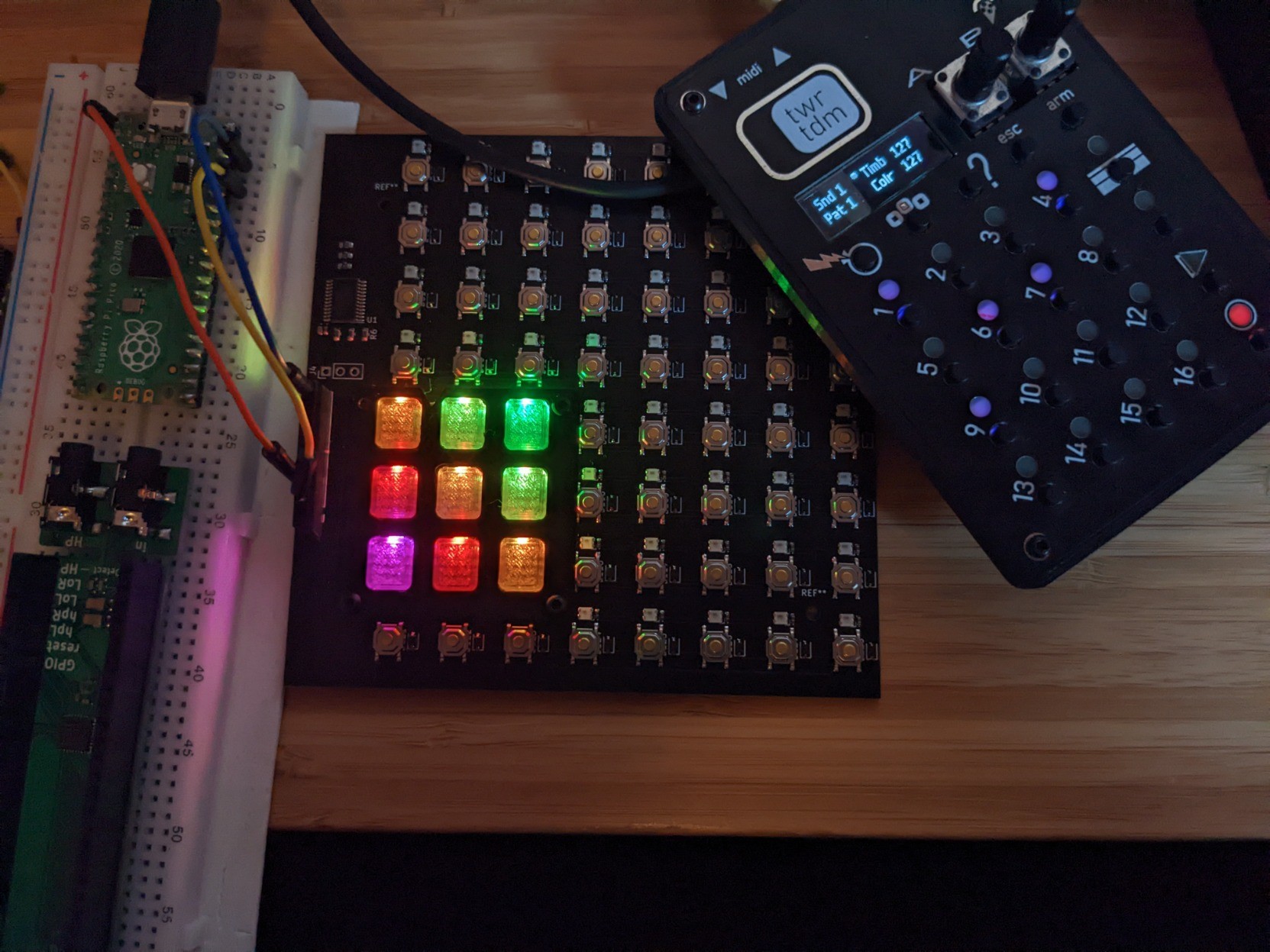Since my last post ... many things have happened:
I shared a prototype with a friend and got some good feedback. This was a huge milestone for me.
I discovered that I really don't like the buttons! So many indie electronics projects use them, but I found that they could tear off quite easily, with just a little bit of lateral force. I did a test board to try out ninja flex clear buttons - this feels like close to the correct solution - I love the brightness, and the feeling is pretty good. And most importantly, they feel much more solid than the existing buttons.
The downside of course is that its more cost per unit, but I'm ok with that trade off. The second downside is slightly less front panel lableling space, but that's probably ok.

I've mostly done work on the firmware since the last update. I feel like I'm closing in on a feature set now:
- 8 channels of sampler / synthesizer (organized in two banks that mute their pair when triggered) or 16 midi. These assignments can be set per channel.
- per pattern / channel trigger rate and loop length, 1-64 step loops, 2x-1/8x trigger rate, with a smattering of triplet rates in there
- ~3 minutes of sampling capacity (I might make this lower to add a "song mode")
- midi in / out sync
- channel muting mode (like your old roland groovebox)
- per step parameter locks (2048 per song, so you can run out ... but I'm running out of ram here)
- per channel effects send - I've got a basic delay in, I think I can afford some other cheap effect, like a chorus or LUT based distortion
The above is more or less working. Below are things that I'd really like to finish before the next hardware rev
- 2 assignable AD envelopes, 2 assignable LFOs per channel - I've prototyped this, but I need to put in the ui for the assignments and make everything work more predictably.
- midi note in - I've tested this, but there are some bad decisions with how I store notes that I need to unwind.
- slides / legato for both internal synths and midi
- PO / volca click sync support
I'm also planning on cutting some features, in particular the onboard speaker / amp. I don't feel like it really makes the unit that much better, and folks will either have headphones or some other speaker. If they want a PO quality speaker, they can buy a PO, they are cheap.
I'm 90% sure that I've figured out the horrible noise that I'm getting from the addressable LEDs, its just a matter of throwing a little RC filter on the power for them, and it goes away. Unfortunately this also means a voltage drop, but in testing I've found that I can lower the noise a sufficient amount and still keep the lights on. I'm a bit worried that when I put this on the actual unit, it won't actually work, but we will see.
In October 22, I spent some time making loops with the unit, just to play around with it some. Not all the loops on this page use it, listen to the ones labeled TDM. Try out loop 1 (for a silly sampler workout), 7, and 16.
 Jonathan Brodsky
Jonathan Brodsky
Discussions
Become a Hackaday.io Member
Create an account to leave a comment. Already have an account? Log In.